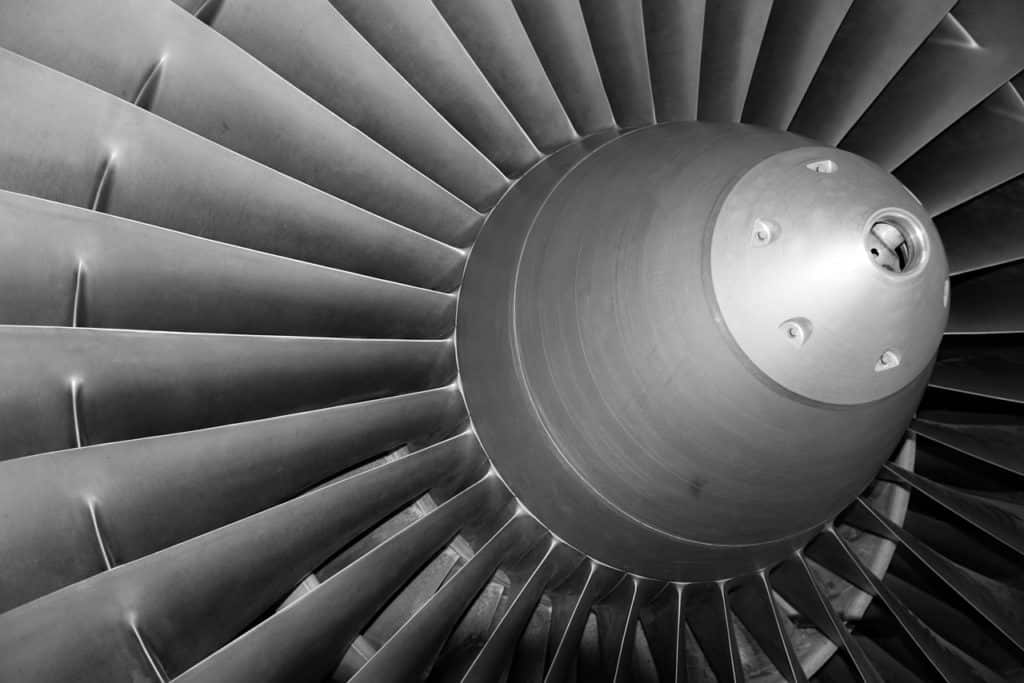Employing Ultrasonic or Eddy Current Inspection of Turbine Blades: Ensuring Flight Safety

Performing eddy current inspections of turbine blades in the engines of jet aircraft can be an effective means of detecting surface and near-surface cracks. However, there are other areas to consider for a complete inspection including the blade attachments, case welds and rotor shafts. Eddy current techniques might not be the most effective type of nondestructive testing for these specific applications. Ultrasonic testing is a more ideal approach —which is why the Federal Aviation Administration issued the Emergency Airworthiness Directive (AD) 2018-09-51 on April 20, 2018.
The AD was sent to all owners and operators of CFM International S.A. (CFM) Model CFM56-7B engines. The requirement for ultrasonic testing is based on the manufacturer’s recommendation. The reasons the FAA released this directive—as an emergency order—are twofold. First, this model of engine is among the most common in the skies above the U.S. and the world. According to CFM, 14,000 are currently in service. Eight thousand of these engines are used in one extremely popular commercial aircraft series.
Popularity alone did not cause the FAA to issue an emergency airworthiness directive, however. Two major in-flight uncontained engine failures, in two years, did. It seems that now, more than ever, is a time to pay attention to aircraft safety and invest in the proper equipment, training, and time for testing.
The Need for Conscientious Inspection of Turbine Blades
Turbine blades in jet engines are subjected to extreme stress. Temperatures reach above 1,200 degrees celsius. The alloys that can withstand that temperature must also be able to withstand intense oxidation. The fan blades themselves and the planes they propel move at high speed, requiring them to withstand severe vibration and mechanical stress.
According to CFM, the fan blades should be inspected after the first 20,000 cycles, and that inspections should be repeated after every 3,000 cycles. They know firsthand about the wear and tear because they built the engines and tested them extensively.
The premise of nondestructive testing, ultrasonic, eddy current, or otherwise, is that inspections can detect changes in material thickness or indications of failure with enough time to fix them. They do so in a way that allows the turbine fan, or whichever component is being inspected, to continue operating if no flaws are detected, or if those that are detected get repaired. Irreparable components can be replaced. This is (obviously) far preferable to exposing customers, employees, and bystanders to the risk of injury or death.
NDT of Turbine Blades Saves Money By Mitigating Risk
Not only is it morally imperative to prevent injury or disaster, it is also financially preferable. The FAA issued its emergency directive with a shortened inspection timeframe after it had begun studying the issue and received public comments.
The shorter inspection timeframe in the emergency directive was a significant challenge for the airlines, as they were faced with meeting a new, sudden deadline. What were apparently 18 months of inspections were now required to be accomplished in 1/18th of that time. The price of these inspections is not simply multiplied by 18 to account for the shorter time frame. The cost of sudden movements, reassignments, procurements, documentation, potential audits and other operational logistics adds up to dramatically more than that.
Bottom line, inspecting diligently to, or even more frequently than manufacturer’s recommendations, can prevent unnecessary challenges and cost outlays later on.
Pricing Advanced Aviation NDT
Finding the right inspection equipment and training employees on the latest techniques, to keep the skies safe are not drags on quarterly budgets. They are the steps which enable us to fly in the first place, and for airlines to operate as successful businesses. Robust, sincere safety efforts, including advanced ultrasonic inspection of fan blades, is essential.
The best way to save money on inspections in the long run is not by doing less of them. It is by doing them better, with faster, more powerful equipment. By using intuitive, cutting edge software. By consulting with experts to learn how best to inspect jet engine turbine fan blades—as well as fan vanes, turbine case welds, rotor shafts, engine mounts and, in fact, every flight-sensitive system on the aircraft. Performing better, faster inspections allows airlines to keep their vast operations moving efficiently and safely. It’s not just dollars and cents. It’s common sense.
Zetec provides tailored maintenance plans and high-quality equipment for turbine blade inspections and other aerospace NDT needs. Contact Zetec today to learn more about our cutting-edge UT solutions.





